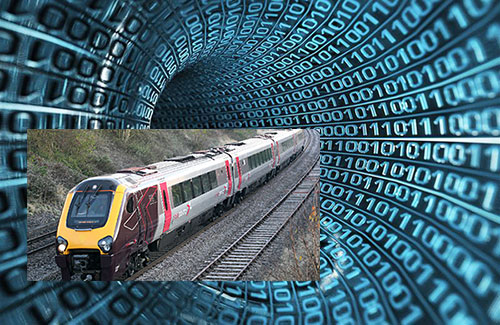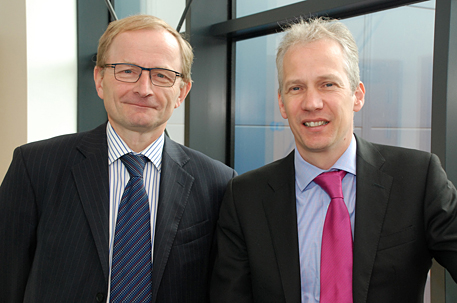Big data – the answer to increased rail safety

Thu, 14 May 2015 15:30:00 BST
RSSB and the Institute of Railway Research combine to explore the potential of ‘Big Data Risk Analysis’
 THE COMBINATION of computing power and large amounts of raw data from a range of sources could play a key role in improving the safety of rail transport.
THE COMBINATION of computing power and large amounts of raw data from a range of sources could play a key role in improving the safety of rail transport.
The prospect took a step forward when experts from fields that included rail research and computer science gathered at the University of Huddersfield for a conference that explored the potential of Big Data Risk Analysis (BDRA).
The event was co-chaired by Dr Coen van Gulijk (pictured opposite - right) of the University’s Institute of Railway Research (IRR) and Colin Dennis (pictured opposite - left) of the Rail Safety and Standards Board (RSSB).
The IRR and the RSSB have been working on the development of BDRA as a new approach to risk analysis for the rail industry. It involves the harnessing of affordable, high-powered computers and a new generation of software applications in order to analyse vast amounts of safety-relevant data, culled from a huge variety of sources.
BDRA, according to Dr van Gulijk, is different from traditional risk analysis.
“Instead of constructing a pre-determined structure for risk calculations, such as fault trees, different sources of safety-relevant information are brought together to find answers to specific safety questions, to identify new trends and to identify new threats to safety,” he said.
 Full potential of BDRA
Full potential of BDRA
The BDRA Symposium held at the University of Huddersfield was attended by more than 40 delegates and the programme included seven presentations by experts from the University of Huddersfield, Delft University of Technology and RSSB. The day concluded with a session at which participants discussed the way forward.
“We needed this symposium so that people could think about what BDRA could actually deliver, how it would benefit the railway industry and to see what the technical and scientific challenges are,” said Dr van Gulijk, who is Reader in Railway Safety at the Institute.
Although the full potential of BDRA is yet to be realised, it has already proved its worth with the introduction of software developed at the IRR for calculating the frequency at which trains approach red signals. The model uses live signal feeds from Network Rail and provide inputs to risk assessments aimed at reducing the safety risk associated with SPADs – Signals Passed at Danger.
The BDRA Symposium at the University of Huddersfield was timed to coincide with the United Nations World Day for Health and Safety at Work. Dr van Gulijk said that it was the IRR’s plan to hold a safety-related event annually on this day.







